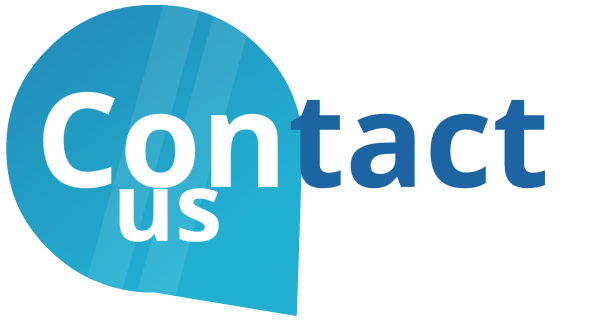What is Robotic Accounting?
Robotic accounting is a method of performing or executing accounting operations with software bots and Artificial Intelligence. In accounting and finance processes, workers deal with many tasks that are repetitive, manual and mundane where the human brain is not needed. With the help of cutting edge technology such as RPA(robotic process automation) and Document AI, we can automate most of these tasks and free up human resources for other valuable tasks such as decision making.
How Robotic Accounting automates finance and accounting?
Finance and accounting processes deals with documents such as invoices, receipts, bills etc. and all these documents can be processed using Document AI that captures data from unstructured documents.
On the other hand, RPA (robotic process automation) mimics human activities such as copy paste, form fill-up, email reading, excel handling and virtually everything that a human can do.
Combining these two powerful technologies, almost all the accounting processes can be automated either partially or completely.
What processes can be automated with Robotic Accounting?
Every finance process can be automated either fully or partially and due to readily available technologies such as AI and RPA, automation cost has also become reasonable and easier. To start your automation journey, let’s focus on these three major processes in finance and accounting:
Accounts Payable (AP) automation: how it can be done with AI and RPA
Accounts Payable (AP) processes involve handling a variety of invoices, which can sometimes require manual processing.This manual invoice processing is the key pain area for the AP team.
The ultimate solution is AI and RPA. Document AI captures the relevant data from invoices and processes them further and RPA takes over the repetitive tasks and integration. Combining these two powerful technologies we can automate most of the tasks in AP processes.
Accounts Payable (AP) automation: how it can be done with AI and RPA
Accounts Payable (AP) processes involve handling a variety of invoices, which can sometimes require manual processing.This manual invoice processing is the key pain area for the AP team.
The ultimate solution is AI and RPA. Document AI captures the relevant data from invoices and processes them further and RPA takes over the repetitive tasks and integration. Combining these two powerful technologies we can automate most of the tasks in AP processes.
Source invoices:
Generally invoices come in emails or in physical mailboxes. An RPA bot can read emails and download attachments(invoices) and send it to AI for the data capturing. RPA bot is also capable of sourcing invoices from any shared folder in Google drive, One drive, dropbox etc. You can also use APIs of the document AI platform to send invoices to the AI model.
Data extraction:
Unlike the traditional ORC, Document AI can extract data from an invoice that the AI has never seen before because it does not follow the template based approach, rather AI understands the context of these documents and finds relevant data from them, irrespective of the invoice templates or patterns. The traditional OCR only understands the pattern and therefore it fails to extract data from the new invoice template. It is strongly suggested to use AI rather than OCR for invoice processing.
Data processing:
Once the data are collected from an invoice, they need to be validated and approved by a stakeholder for processing payment. These features are generally provided by document AI platforms.
You may also need to apply more business rules on the captured data such as GL coding. 3-way matching, split payments etc. These business logics either can be implemented using RPA or regular programming but in most cases these are handled by the accounting systems that are in use.
Accounting system integration:
It is important to populate the extracted data into the existing accounting system for the further processing. RPA can play a major role here in populating invoice data into the existing accounting system specially for the legacy accounting system where APIs are not supported or for desktop based systems such as Infor Visual and Quickbook desktop. RPA is also fast and easy to implement. However if your accounting system supports APIs, it is suggested that you use invoice processing APIs instead of RPA to populate data to your system.
3-way and 4-way matching:
It is important to validate the invoice before the payment. In many companies, invoices are validated manually with P.O and receipts and sometimes with QA reports before processing the payment.
This entire process of 3-way or 4-way matching can be automated with Document AI and RPA. RPA bot can find all three or found documents and match it automatically and flag for any expectations.
Split payment:
In many businesses split payments are done based on the quantity of product that received. Document AI can read the product quantity from receipts and trigger an RPA bot for the split payment. Split payment logic can vary from business to business.
Accounts payable are sometimes complex and have many business logic that are unique to an organization. RPA bot can be configured or programmed to meet the exact requirements of the AP process.
How to automate the Account reconciliation process?
Robotic accounting is popular and desirable in reconciliation because it is the most tedious, repetitive and boring task in accounting and the good news is that almost 80% to 90% reconciliation can be automated with AI and RPA. Document AI is the perfect technology to read and capture tractional data from bank and credit card statements, check deposits etc. and it passes the transactional data to an RPA bot that reads the reconciliation history from the accounting system to find out the right category of each transaction and reconcile the new transactions accordingly without involving any human. If a new type of transaction appears on the bank statements, it can also flag it for humans to process it manually.
How to automate Account receivable process?
RPA and document AI together can automate most of the tasks in the account receivable process- starting from sending invoices to following up for the payments to tracking payments.
Creating Invoices and following up on collection
- Pulls client details from CRM or other sources
- Constructs custom invoices by determining the line items for each client in the ERP system Or create invoices through the existing software system.
- Sends invoices through email or other means.
- Sends payment reminders through automated calls and texts for aging invoices.
- Responds to customer questions and demands.
Track and process customer payment
- Document AI Can read images, PDFs, checks, ACH payments, wire receipts, and credit card dealings to use for payments from clients toward their open invoices and pass the captured data to a bot for further processing.
- AI can also extract data from checks from the bank lockbox.
- Can apply customized rules and logics for repayments, partial payments, refunds, credit notes, etc.
- Brings humans in loop for any discrepancies.
-
Soumen Dashttps://intelgic.com/insights/author/admin/
-
Soumen Dashttps://intelgic.com/insights/author/admin/
-
Soumen Dashttps://intelgic.com/insights/author/admin/
-
Soumen Dashttps://intelgic.com/insights/author/admin/


